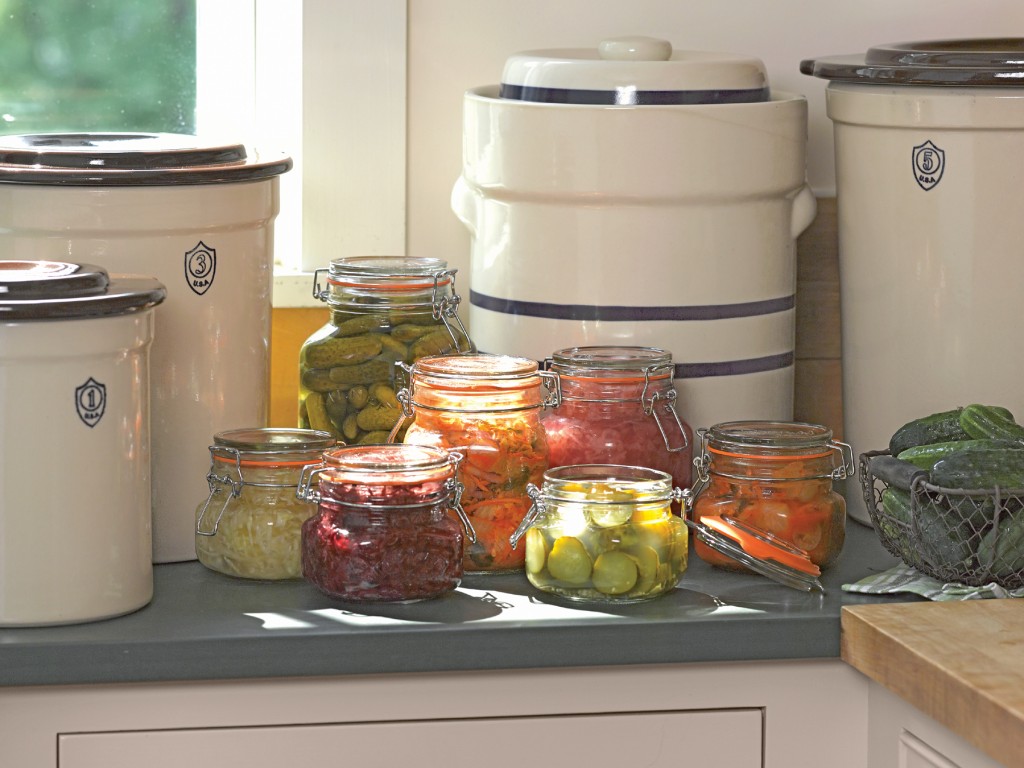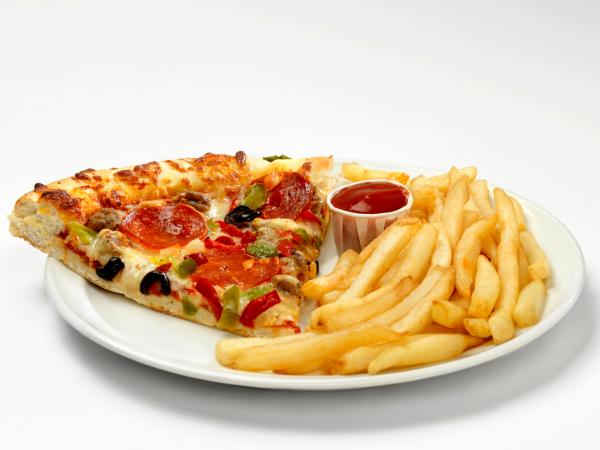
Photo: Gardener’s Supply Company
by Melinda Myers
The cucumbers have filled the vegetable drawer, you’ve run out of cabbage recipes and your family is refusing to eat one more BLT. Or maybe you just couldn’t resist that special deal on a bushel of tomatoes, potatoes or apples at the farmer’s market. So what is a gardener or shopper to do with all that produce?
Since properly stored vegetables will hold their flavor and nutritional value longer than those left in a plastic bag or set on the sunny kitchen counter, consider preserving some for the long winter ahead using one of several methods.
Storage orchard racks and slatted crates placed in a cool dark location have long been used to store squash, onions and potatoes. The stackable nature or drawers provide ample storage space, so fruits and vegetables do not touch. Keeping stored fruit separated prevents rot from spreading from one fruit to the next. Plus, the slatted sides allow airflow to extend storage longevity.
Those in colder climates can store their carrots and parsnips right in the garden. Once the soil gets a bit crunchy, cover them with straw or evergreen boughs for easier digging in winter. Then dig as needed or harvest during the first winter thaw. If this isn’t possible or not your style, try out a root vegetable storage bin. The root crops are layered in sand or sawdust and placed in a cool dark location. Just remove and use as needed. No snow shoveling needed.
Drying is one of the oldest food preservation techniques. Most of us have grabbed a few bundles of herbs to hang and dry. Expand your drying endeavors to include fruits and vegetables. The goal is to quickly remove moisture without cooking the food. You can make your own dehydrator or purchase one. Research has shown that blanching vegetables and fruit before drying helps destroy harmful bacteria. Blanching involves a steam or boiling water bath followed by a cold water bath. Timing varies with the fruit or vegetable you are preparing.
Another ancient food preservation technique, fermentation, is experiencing a comeback. Cultures around the world have fermented fruits and vegetables for thousands of years. Unique flavors, storage options and health benefits have many gardeners revisiting this tradition. Fermenting cucumbers into pickles, cabbage into sauerkraut, and berries into preserves are just a few options. The ingredients can be as simple as water, salt, and spices. All you need is a vessel, vegetables and fermenting culture. You can jump-start your efforts with a fermentation crock kit (gardeners.com) which includes the crock, cover and weights to make sure your veggies stay safely submerged in water.
Or quickly lock in the flavor and nutrition of your fruits and vegetables with freezing. You’ll need airtight containers or bags that are durable, don’t leak and won’t become brittle in cold temperatures. Some produce does not freeze well and others may need to be blanched before they are packed in the freezer bag or container. But frozen items can easily be retrieved from the freezer and included in your winter meals.
Canning is a bit more involved, but can be lots of fun. This process preserves the food and keeps it safe by preventing the growth of undesirable bacteria, yeast and mold. The sealed jars keep the flavor in and bad microorganisms out. So gather your produce, jars, pressure cooker, canner and friends to create tomato sauce, salsa, jams and jellies to enjoy or give as gifts.
Whatever method you choose, do a bit of research before you start. You’ll have greater success and a lot more fun. The National Center for Home Food Preservation website, http://nchfp.uga.edu, provides all the basic information for storage and food preservation.
Gardening expert, TV/radio host, author & columnist Melinda Myers has more than 30 years of horticulture experience and has written over 20 gardening books, including Can’t Miss Small Space Gardening and the Midwest Gardener’s Handbook. She hosts The Great Courses “How to Grow Anything” DVD series and the nationally syndicated Melinda’s Garden Moment segments. Myers is also a columnist and contributing editor for Birds & Blooms magazine. Myers’ web site, www.melindamyers.com, offers gardening videos and tips.



